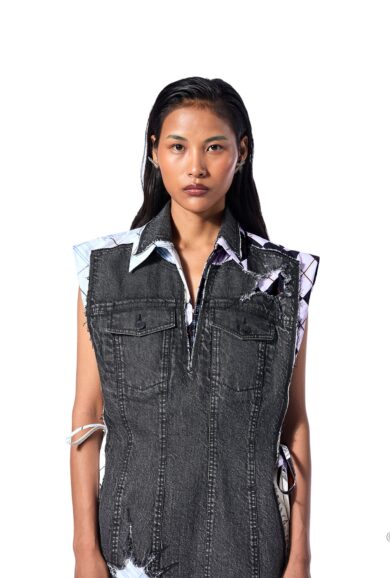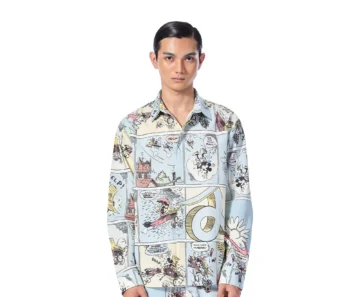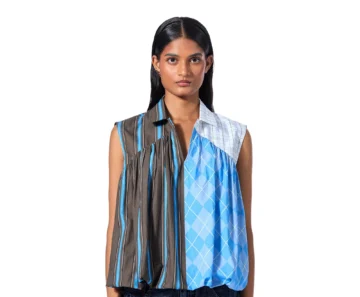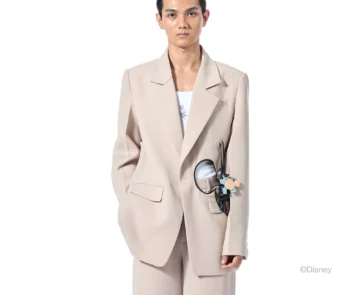Kanika Goyal speaks to Blur The Border:
BTB: How did the collaboration with Disney come about? Can you share a pivotal moment or connection that helped bring this partnership to life?
Kanika: It honestly felt serendipitous. We had been in touch with Disney a few years ago, but the timing just didn’t align back then. Then last year, I happened to visit the “100 Years of Disney” exhibit in London—and something about that experience reignited the spark. It served as this beautiful, nostalgic reminder of what their universe meant to all of us growing up. We reached out again, and this time, everything just fell into place. From that point on, it all unfolded quite organically. It felt like the right moment to reimagine something as iconic and universally beloved as Mickey & Friends, but through the KGL lens—where imagination meets irreverence, and nostalgia collides with contemporary Indian visual culture.
BTB: From initial discussions to final execution, what was the overall timeline to create the pieces? What were the key stages or turning points in the process?
Kanika: We revisited our conversations with Disney in October last year, and after months of dialogue and back-and-forth on creative directions, we finalized the collaboration early this year. The process officially began soon after.
The starting point was an idea that felt both poetic and powerful—“a dream that dreamed itself.” To me, that line captures the essence of how Disney lives in our collective imagination, blurring the boundaries between memory, fiction, and lived experience. Mickey and his friends weren’t just animated characters I watched as a child—they were emotional placeholders, symbols of joy, mischief, and comfort.
What excited me most was the opportunity to reinterpret that emotional nostalgia through the KGL world—placing it against the vibrancy and chaos of Indian craft and storytelling. This was about creating something that resonates across generations while still feeling visually unexpected and deeply rooted in where I come from.

BTB: Were there any unexpected learnings, whether about your own brand, your audience, or the collaboration process, that emerged during this partnership?
Kanika: Absolutely. This collaboration gave us a fascinating window into the inner workings of the Disney universe—its storytelling structure, its visual discipline, and its global resonance. Navigating the balance between Disney’s timeless charm and KGL’s irreverent, playful language was both exciting and, at times, overwhelming.
One of the biggest takeaways was just how wide the emotional spectrum of Disney truly is. We realised we weren’t just designing for die-hard fans, but also for people who had once felt connected to those characters and might have drifted away. We wanted the collection to speak to both—those who love Disney with all their heart, and those who remember it fondly but connect more with a modern reinterpretation.
BTB: If you were to approach this collaboration again, is there anything you would do differently, either creatively or operationally?
Kanika: If I had to pick one thing, it would be the timing of the launch. We had originally planned to go live a little earlier, but due to the political climate in the country at the time, it didn’t feel appropriate to launch something so celebratory. That shift did impact some of the momentum we had envisioned, especially around our event and the initial roll-out. But honestly, the response post-launch has been so heartening that those logistical hiccups now feel minor. The love the collection has received made it all worth it.
BTB: What guidance or insights would you share with emerging brands looking to engage in meaningful global collaborations?
Kanika: The most important thing is choosing the right partner—one whose values, ethos, and creative language align with yours. The synergy has to be genuine, not forced. Once that’s in place, the next big challenge is maintaining the integrity of both worlds without diluting either. It’s about finding that sweet spot where your vision and theirs can coexist in a way that feels fresh and cohesive.
Also, never underestimate the power of visual communication. Your imagery, your storytelling, your tone—these become powerful tools in helping audiences navigate and understand the collaboration. Building a strong visual vocabulary is just as important as the product itself. It’s what transforms a partnership into a narrative.


